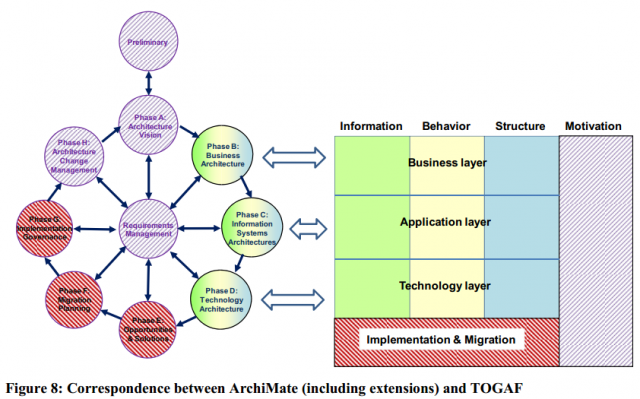Od czasu do czasu spotykam się z zaskoczeniem, gdy mówię, że pewne słowa kluczowe w specyfikacjach są “standaryzowane”. Otóż specyfikacje notacji na OMG.org mają narzucone pewne słownictwo. Przykładem niech będzie specyfikacja notacji BPMN v.2.0.2, zawiera ona taki oto rozdział :
3.2 Normative
OMG UML
? OMG Unified Modeling Language (OMG UML), Superstructure, V2.1.2 –
(jest już UML 2.5.)
OMG MOF
? Object Management Group – Meta Object Facility (MOF) Core Specification, V2.0
https://www.omg.org/spec/MOF/2.0
RFC-2119
? Key words for use in RFCs to Indicate Requirement Levels, S. Bradner, IETF RFC 2119, March 1997
http://www.ietf.org/rfc/rfc2119.txt
Oznacza to, że do poprawnej interpretacji specyfikacji notacji należy znać specyfikacje: MOF, UML oraz także RFC-2119. O MOF i UML pisałem nie raz, dzisiaj kilka słów o tej ostatniej.
Jest to dokument opisujący rekomendowany sposób formułowania wymagań (np. w stosunku do elementów diagramu i ich użycia). Wymagania są tu rozumiane szeroko, jako sformułowania normatywne. “Słowa kluczowe do wykorzystania, w RFC do wskazania poziomów wymagań” to słowa i zwroty o tu ustalonym znaczeniu :
This document specifies an Internet Best Current Practices for the Internet Community, and requests discussion and suggestions for improvements. Distribution of this memo is unlimited.?(?Key words for use in RFCs to Indicate Requirement Levels,? 1997)?
Wymienione słowa kluczowe odnoszą się do formułowania reguł (przy stosowaniu określonych zasad będących wymaganiami) i oznaczają:
- MUSI (oryg. MUST) oznacza, że to zachowanie (określona reguła, wymaganie) jest absolutnym wymogiem, alternatywnie: WYMAGA SIĘ, NALEŻY
- NIE MOŻE (oryg. MUST NOT) oznacza, że określone zachowanie jest absolutnie zakazane, alternatywnie: NIE NALEŻY
- POWINIEN (oryg. SCHOULD) oznacza, że określone zachowanie jest rekomendowane, a więc jedynie w ściśle określonych okolicznościach, jeżeli istnieją określone powody, określone zachowanie może być pominięte, alternatywnie: REKOMENDUJE SIĘ,
- NIE POWINIEN (oryg. SHOULD NOT) oznacza, że pewne zachowania odradza się (rekomenduje się nie wykonywać określonego zachowania), a więc zachowanie to jest dopuszczalne jedynie w określonych okolicznościach, alternatywnie: ODRADZA SIĘ, NIE REKOMENDUJE SIĘ,
- MOŻE (oryg. MAY) oznacza, że określone zachowanie jest opcjonalne, a więc skutki tego realizacji lub pomięcia określonego zachowania są całkowicie neutralne, alternatywnie: OPCJONALNIE
Powyższe odnosi się do wszelkich wymagań, do decyzji o zastosowaniu czegoś (np. określonej konstrukcji w danej notacji). Pod pojęciem “zachowania (się)” rozumiemy interpretację zapisów np. o stosowaniu lub wymaganiu czegoś lub nie.
Biorąc pod uwagę fakt, że definicje pojęć to klasyfikatory i stanowią one sobą reguły (coś jest lub nie jest czymś) słowa te stanowią także bazowy element składni treści reguł biznesowych (elementy predykatów), np. “kierowca NIE MOŻE przekraczać dozwolonej prędkości”, “kierowca POWINIEN zachować bezpieczną odległość od poprzedzającego go pojazdu”, “kierowca MOŻE przewozić pasażerów”, a ogólnie rzecz biorąc “kierowca MUSI przestrzegać zasad Kodeksu Drogowego”, a ten to nic innego jak właśnie zbiór reguł.





